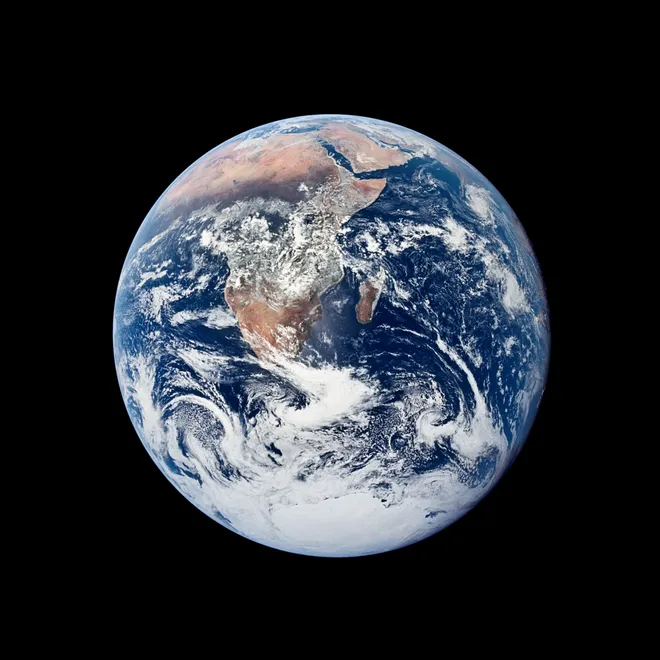How close is Earth to becoming unlivable? Humans push planet to brink, study warns.
We're two-thirds of the way towards an unlivable planet.
According to a new study released Wednesday, human activity has now gone past six of nine planetary "boundaries" that are "important for maintaining the stability and resilience of Earth as a place conducive to human welfare."
These nine boundaries are ways to measure the stability and livability of Earth for humans.
"Crossing six boundaries in itself does not necessarily imply a disaster will ensue, but it is a clear warning signal," said study lead author Katherine Richardson of the University of Copenhagen in Denmark.
"We can regard it as we do our own blood pressure," she added. "A BP over 120/80 is not a guarantee of a heart attack but it increases the risk of one. Therefore, we try to bring it down. For our own – and our children’s – sakes we need to reduce the pressure on these six planetary boundaries."

What are planetary boundaries?
According to the University of California-San Diego, "the planetary boundaries concept, first published in 2009, identifies nine global priorities relating to human-induced changes to the environment.
"The science shows that these nine processes and systems regulate the stability and resilience of the Earth system – the interactions of land, ocean, atmosphere and life that together provide conditions upon which our societies depend," the university said in a statement.
Richardson, in an e-mail to USA TODAY, said that "the planetary boundaries framework ... identifies guardrails for humanity’s impacts on the global environment."
"Current scientific understanding suggests respecting these guardrails would minimize the risk of human activities triggering a dramatic and potentially irreversible change in global environmental conditions," she added.
The nine planetary boundaries are:
- Biosphere integrity
- Climate change
- Freshwater changes
- Ocean acidification
- Stratospheric ozone depletion
- Atmospheric aerosol loading
- Land system change
- The introduction of novel entities such as synthetic chemicals and nuclear waste.
- Biogeochemical flows such as the movement of nitrogen through global element cycles.
In the above list, the boundaries in bold indicate those have been "transgressed."
Six boundaries have been 'transgressed'
In the new study, Richardson and her team of researchers suggest that six of the boundaries have been "transgressed." They say that three remain: stratospheric ozone depletion; ocean acidification, which is nearing the boundary condition; and atmospheric aerosol loading, where the boundary has been breached in some regions.
"The planetary boundaries framework sets boundaries on how much we can allow ourselves to impact not only climate but also other global processes that are critical for maintaining conditions on Earth that can support modern civilization," Richardson said.
'We are at a fragile moment'
University of Pennsylvania meteorologist Michael Mann, who was not involved in the new study, told USA TODAY that "in my view, this study sort of formalizes something that I think we all can see and feel. Whether it’s the climate crisis or all of the other environmental challenges, we face today, we are coming up against the limits of environmental sustainability."
"We are at a very fragile moment," Mann said. "There is still time to avert disaster, but we must take action now. Not next year or next month but now."
The study was published in the peer-reviewed journal Science Advances, a publication of the American Association for the Advancement of Science. It represents the third update of the planetary boundaries framework carried out by 29 scientists from eight different countries.
The patient is 'unwell'
“This update on planetary boundaries clearly depicts a patient that is unwell, as pressure on the planet increases and vital boundaries are being transgressed," said study co-author Johan Rockström, director of the Potsdam Institute for Climate Impact Research in Germany. "We don’t know how long we can keep breaching these key boundaries before combined pressures lead to irreversible change and harm."
Richardson likens the framework to a bank statement – "it tells us how much of various components (resources) of the Earth system we can allow ourselves to use without greatly increasing the risk that our activities will lead to dramatic and potentially irreversible changes in the overall environmental conditions we experience on Earth."
According to Richardson, the study shows that focusing on climate in isolation will not solve the climate crisis; It must be seen together with the biodiversity crisis. "Life is what makes this planet unique and it is the interaction between living organisms and climate that has created the conditions on Earth throughout the Earth’s history," she told USA TODAY.
Disclaimer: The copyright of this article belongs to the original author. Reposting this article is solely for the purpose of information dissemination and does not constitute any investment advice. If there is any infringement, please contact us immediately. We will make corrections or deletions as necessary. Thank you.




